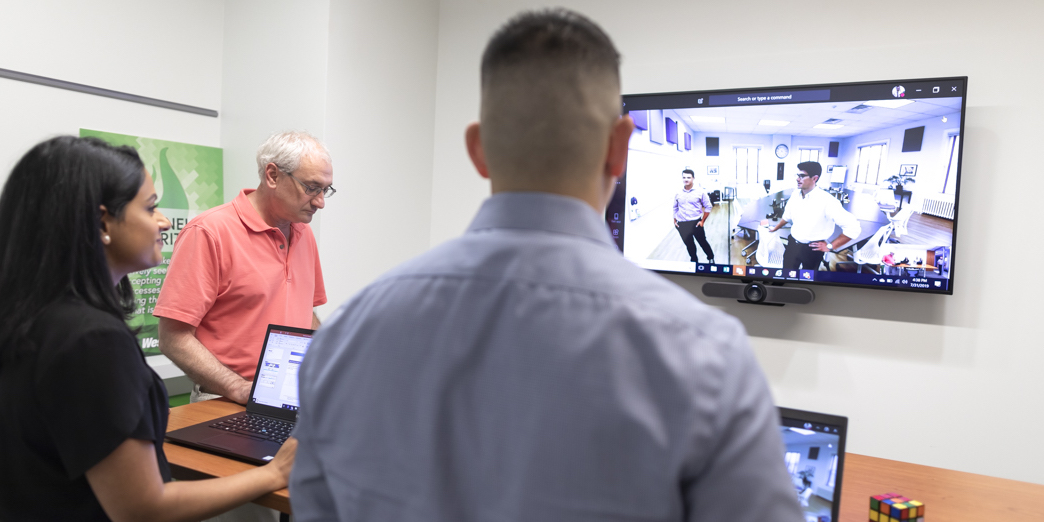
Leadership for everyone
FEATURE – If you think one is born a leader, think again. Leadership can be learned and, in this article, the author provides a four-step guide to developing it.
Words: Julie Chevalier
Leadership is not a gift; it’s the result of a learning path. It is a skillset, and, like any skillset, it requires hours of practice to grow. Ask athletes and artists!
When I joined the Institute Lean France years ago, I was lucky enough to be part of the lean engineering community of practice. After watching Michael Ballé and Cécile Roche grow this movement, I tried to capture and practice their leadership model to develop my own lean manufacturing community. Based on my experience and endless hours of discussions with my colleagues, it became clear to me that there are four steps to developing one’s own leadership skills.
Importantly, this approach is not another bureaucratic process that you need to follow step by step, but a guide to self-auditing your skills, so you can identify areas of improvements and, therefore, have more impact on your teams, company, and – why not – society.
First, you'll have to step forward to address a problem you want to solve or test an idea. Then, you'll move to the second step: the recruitment of allies and the creation of your communication structure. If your idea is strong enough, you will quickly attract followers. They will then require your caring and generous support to deepen their engagement. Finally, you need to be looking forward to the strategic change you will implement. And because changing habits is not easy, you will need to track your results and decide what are the changes to adopt, adjust or abandon.
STEP FORWARD
The first step is the spark. Stepping forward sounds easy enough, but challenging the status quo is not – especially when the existing system is defending it, and you face pushback from its defenders.
When Mathieu, the plant manager of a manufacturing company, decided to start a lean transformation, he began by looking at his customers’ complaints. This quickly led him to the shipping area. He started explaining his vision to the shipping team in very simple terms: “If we want to satisfy our customers, we first need to understand what is going on with our shipping process and investigate why orders stay idle on the shelves while we are late to deliver others.” He then helped the team to get started and asked the team to install a simple board in the area to track scheduled shipments versus those that really went out. After that, he regularly went to visit the gemba, but it took a very long time for this board to appear! After two years, he finally succeeded: the board was placed in the area trucks leave from and the team has a physical place to discuss problems and do kaizen.
So, what happened? Mathieu stepped forward and stayed the course, while facing the status quo and the resistance of its defenders until the spark created a fire. He knew that customer satisfaction depends on teams solving daily problems by becoming involved in kaizen activities and testing original countermeasures. So, he took the initiative on the shipment schedule and went to the gemba every week to communicate with his team and listen to the challenges they faced. Along the way, he learned to keep calm with status-quo defenders and never surrendered. He had a clear vision and kept repeating and reframing why stepping forward on this very topic was so important. Indeed, the other important lesson from Mathieu’s story is how he chose the problem to tackle. His direction was crystal clear: people – both customers and the team.
RECRUIT ALLIES
But no one can really lead on their own. This leads us to the second step in developing one’s leadership: finding supporters. Without allies who will help you, your initiative will be nothing more than a flash in the pan. This step requires identifying the communication structure in your organization and mastering persuasive communication.
Let me share an example. Once, Cécile Roche, Christophe Richard and I – all from Institut Lean France – decided to step forward and create a lean manufacturing community of practice. We secretly thought this would naturally work, since we knew there was an existing need for a space where manufacturing folks could get together and discuss. Why wouldn't it work? So, we designed the plan, we planned, we organized. Once we were ready to tell the world that something great was coming, guess what? Nothing happened! Almost no one registered. I remember a discussion with my team when we finally realized we had failed at the second step: we didn’t give enough attention to our communication. As a result, we were alone with no allies to support our brilliant idea. A big change of plans was in order: we decided to stop what we were doing (designing, programming, marketing…) and start all over again by looking closely into how we structured our communication, identifying allies and recruiting them one by one. And this time, it worked!
The key insight here is to move from the classical approach “who does what?” to a “who speaks to who?” approach. This can truly turn an idea into a viable project.
SUPPORT FOLLOWERS & CREATE A COMMUNITY
We soon realized that, to build this community, we needed more than just a few allies. We needed a community of followers. The third step of leadership development refers to just that: supporting followers. Growing a community of followers happens organically. You don’t really need to recruit them using your persuasive communication, like you do for allies. Supporting followers entails maintaining your network by showing care, being generous, recognizing people’s contribution, encouraging them to engage and to bring new people with them. You don’t need to speak to each of them every day, but you do need to recognize their existence even if they are not allies, acknowledge that they have a key role in this new movement. When it comes to this, you need to see and treat everyone as a key player.
LOOK FORWARD TO STRATEGIC CHANGE AND FOLLOW UP
Once a leader has stepped forward on a problem, recruited allies by identifying the communication structure by “who should talk to who” and give enough care to followers, he will have to develop one last skill: his capability to commit to strategic changes and help people deal with the consequences of those changes.
Committing to strategic change means recognizing the upcoming challenges and facing the pivots necessary to adapt to new circumstances. You can start by asking yourself simple questions: what is the timeline you have in mind? When you think about the future, do you see it in three months, six months, a year, more? Then try to go deeper: what happens if you push the horizon from three months to three years? From three years to five? Are the issues you are dealing with still as important three years down the line? What are the obvious obstacles between your current state and your future state? Which troublesome problems require your attention here and now because they will only grow bigger in the future? And where exactly do you need to step forward, recruit allies and support a community of followers?
Extending the horizon to look beyond short-term outcomes is key to developing and maintaining your leadership.
In our lean manufacturing community, for example, many issues are still on the table and require strategic moves: sustainability, the re-industrialization of the country, artificial intelligence and new technologies, shrunk markets and inflation, supply chain shortages... These challenges are happening now and it’s vital to ask ourselves how they will shape our future. What are the strategic turns the community must consider to remain alive in five years? What about 10 years from now?
Mind you, no one likes to change habits, which means that you will need to deal with change management and follow up with people all the time. Change is a natural part of life, but our emotional reactions to it can be difficult to handle. Leaders need to show empathy by listening, mirroring, and acknowledging people’s emotions, letting them know they are not alone.
Finally, once the leader has committed to the change and managed the emotional reactions of the people who will be impacted by it, they will have to look at the results of the previous plan and decide whether they need to execute it more intensely or simply pivot.
IN CONCLUSION
There is no recipe for a great leader, but the good news is that leadership can be learned. We can develop our leadership capabilities by practicing these four steps of stepping forward on an issue, recruiting allies, supporting followers, and committing to change and following up on it. This self-audit guide can be your path to becoming serious at developing your leadership skills and helping others to be greater leaders tomorrow.
THE AUTHOR

Read more


FEATURE – This global designer and manufacturer has leveraged a remote kaizen initiative to keep the flame of continuous improvement burning during the Covid-19 pandemic.


FEATURE – Why is lean change so hard to achieve in times of plenty? And why does it seem to be more attainable when chaos reigns? The author tries to answer these questions.


ROUNDUP – In the last roundup on lean tools and concepts of the year, our editor collects and curates the best articles on strategy deployment (hoshin kanri).


CASE STUDY – This Brazilian agrobusiness has developed a unique and clever management system that puts people at the heart of the work.
Read more


INTERVIEW – In this Q&A, we learn how the Technical & Production (T&P) area of Nestlé Colombia Ecuador is using lean and Art Smalley’s four types of problems framework to bring leadership closer to the gemba.


CASE STUDY – What is the approach to people development used at Volvo Cars? The authors explain how the organization has created a production system fully owned by operators and managers.


FEATURE – What does it mean to be a lean leader? Our editor tries to answer this question by searching the Planet Lean archives for the best nuggets of wisdom from our authors.


FEATURE – There are five dimensions to a lean transformation – purpose, process, people, management behaviors, and mental models – and it is the role of leadership to adjust its stance to each of them.

